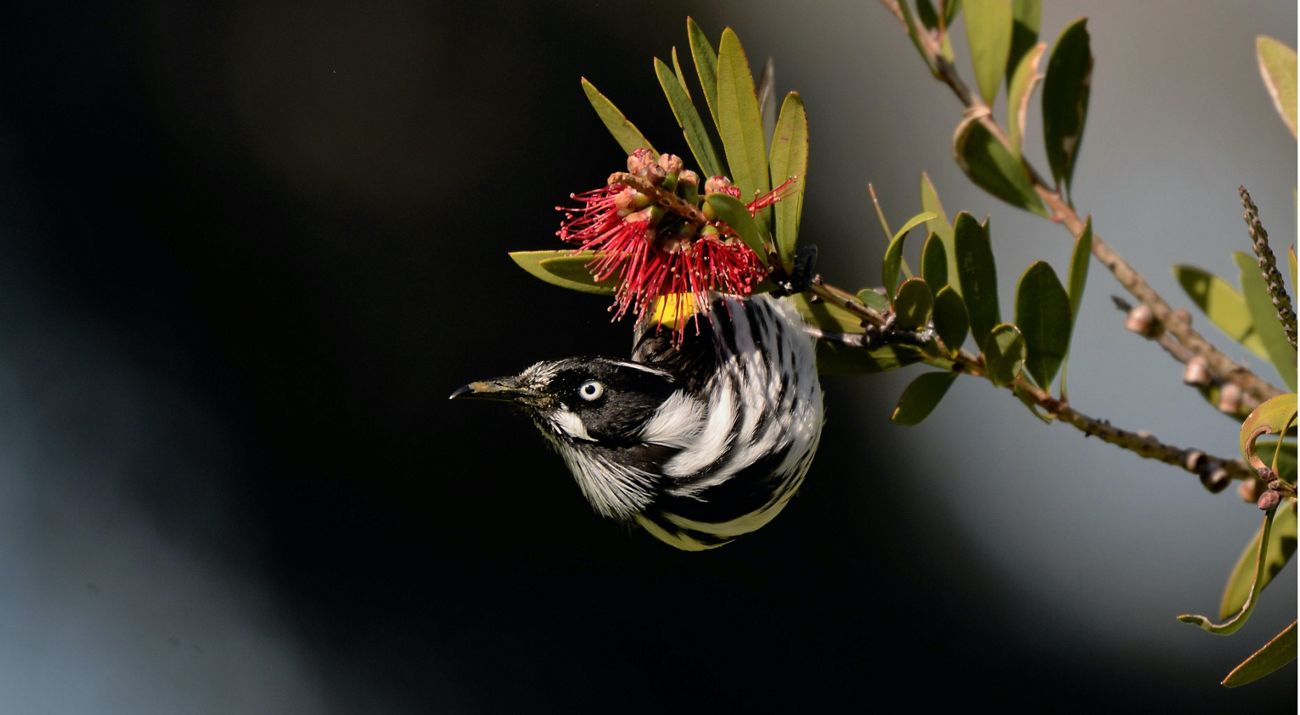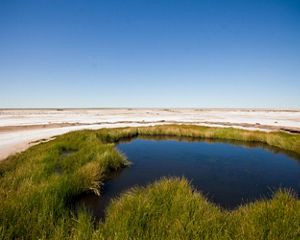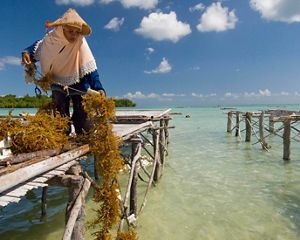Australia enjoys an estimated 24,000 species of Australian native plants.
They’re perfect for gardens because they tend to be low maintenance. They also rarely require fertilisers or pesticides and can often support themselves on very little water.
Native plants are essential to the preservation of biodiversity. Biodiversity creates healthy ecosystems that clean our water, purify our air, maintain healthy soil, regulate the climate and provide us with food and other resources.
Australian native plants also provide habitat for all kinds of local wildlife – especially birds, bats, bees and a wide variety of insects.
Did you know that Aussie native plants are unique? 80% of the flora and fauna of Australia live nowhere else on Earth.
Check out some more fun (and surprising) facts about native Australian plants below:
10 Fun facts about Australian native plants
1. The Lily Pilly is an edible treat
If you happen to be looking for an attractive, edible native hedging plant, you can’t go past the Syzygium or ‘Lilly Pilly’.
There’s hundreds of species within the Lilly Pilly family of evergreen shrubs or trees, and all feature the brightly coloured, sweet-tart fruits that range in colour from pink, through to red, purple and blue.
The berries are edible and can be made into products as diverse as jam and wine and are said to taste delicious with cheese.
Lilly Pilly has been used by First Nations people for generations as a treatment for sore ears, wounds and skin conditions, as well providing a rich source of Vitamin C.
And Szyzgium is one of the best Australian native plants for birds, providing shelter, perches and nesting sites. Birds just love those berries!
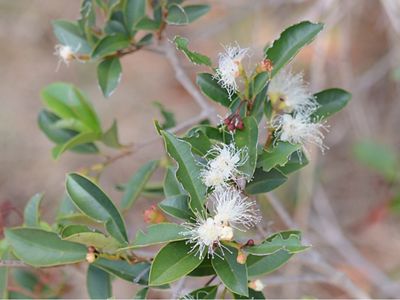
2. A native plant that resembles a kangaroo’s paw
Kangaroo paws (Anigozanthos sp.) are spectacular flowering strappy plants that grow from 30cm to 2m high. As per their name, their furry flowers resemble the paws of a kangaroo.
Of the 12 species, 11 are from the Anigozanthos genus. The 12th, Macropidia fuliginos, commonly known as Black Kangaroo Paw because of its striking black and green flowers, is a separate genus of its own.
The Red and Green Kangaroo Paw is the floral emblem of Western Australia.
If you’re a pet owner, you’ll be pleased to know that this lovely Australian native plant is non-toxic to cats and dogs.
Indigenous Australians have used kangaroo paws for medicinal purposes for centuries. ‘Nollamara’, ‘Kurulbrang’ and ‘Yonga Marra’ are some of the names used by different language groups in the local language.
Apart from being drought tolerant, the tubers of kangaroo paws contain significant amounts of starch and were an important part of the traditional diet of the Noongar people of the south-west Western Australia.
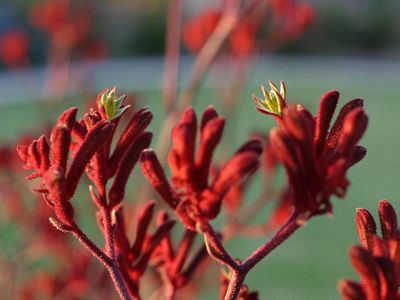
3. The everlasting daisy is perfect for your garden
Australian native everlasting daisies (Xerochrysum) are highly attractive to native bees and flower for an extended time, making them an appealing addition to any garden.
Native butterflies and larvae use the flower heads for food and are insect pollinated. Stingless bees are particularly fond of certain varieties.
Adding everlasting daisies to your garden will create an oasis for insects and therefore insect eating birds. Flowers are rich in pollen and help provide food during the winter and spring, when insects need it most.
But are they everlasting? Sadly not. They'll grow as a short-lived perennial or an annual, but many do self-seed and recur in your garden year after year. Or you can collect the seeds and re-seed yourself. (The description of ‘everlasting’ comes from the fact that these daisies may be readily dried or pressed.
Quick tip: Store your seeds in airtight containers, and pop them in the freezer for 24 hours to do away with any seed-eating bugs.
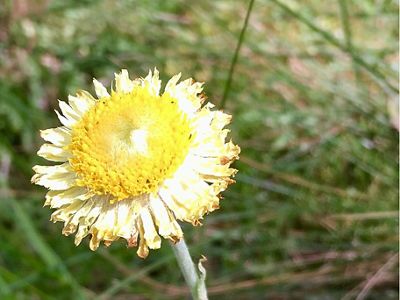
Xerochrysum bracteatum (Everlasting Daisy) photographed at Buckley Conservation Reserve, Mornington Peninsula, Victoria, Australia
4. The bottlebrush (Callistemon) is medicinal
Bottlebrush flowers are said to be a source of food among many Indigenous Australians, who also treated numerous diseases, such as bacterial, fungal, viral and parasite infections with this plant.
Callistemon species, are known as bottlebrushes for their elongated, brush-like flowers. They are among the hardiest of Australian native plants.
If there’s one thing that bottlebrushes are known for is that they are extremely tough and long-lived, and thankfully for many aspiring gardeners, almost impossible to kill.
The 50 or so different species range in size and colour. When they flower, the petals open to reveal colourful stamens in pink, mauve, cream or green depending on the variety.
Australian native bottlebrushes are extremely attractive to nectar-feeding birds because they produce plenty of nectar and pollen. They also attract seed-eating birds, like wattlebirds and cockatoos.
Fairy-wrens, warblers, buntings, and orioles also enjoy feasting on bottlebrush flowers.
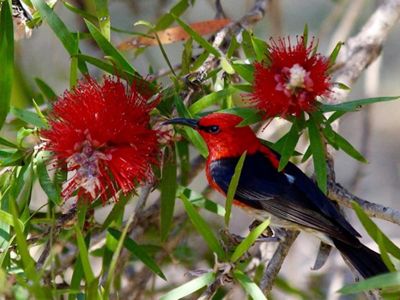
5. There are over 1000 types of Australian wattle (Acacia)
The Acacia genus, which includes all the wattles, is the largest group of trees and shrubs in Australia with more than 1000 known species.
The Golden Wattle (Acacia pycnantha) is Australia’s national floral emblem and it’s from the Golden Wattle’s distinctive yellow flowers and green leaves that Australia draws its national colours – green and gold.
Wattles are tough and are often the first vegetation to recover after a fire or drought.
The strong smell produced by wattles attracts birds, bees, wasps and beetles.
The thick foliage provides shelter, perching and nesting sites for a wide range of birds, depending on the species of wattle.
What you might not know is that ants and acacias have a very special relationship. Acacia seeds are coated in an oily fleshy outgrowth. Ants take the whole seed back to their nests where they eat the fleshy outgrowth. The seed then remains stored underground until ready for germination.
And you might be surprised to learn that acacias are actually legumes. They can take nitrogen from the atmosphere and spread it through their roots, fixing it in the soil which is good for other plants nearby.
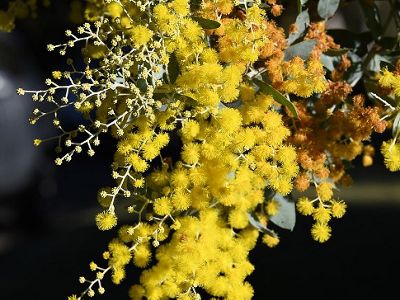
6. The Native banksias are nocturnal
There are 173 Banksia species, and all but one occurs naturally only in Australia.
Banksias grow as trees or woody shrubs, but there are several species that are prostrate, with branches that grow on or below the soil.
Banksia flowers are usually more commonly a shade of yellow, red and pink
Banksias are heavy producers of nectar, which makes them an important source of food for animals like honeyeaters and small mammals such as rodents, the Honey Possum, pygmy possums, gliders, and bats.
What you might not know is that it has been found that some banksias emit a stronger odour at night, possibly to attract these nocturnal pollinating mammals.
Banksias are much loved by birds, particularly cockatoos, who break off the cone-like woody remains of Banksia flowers to eat the seeds and insect larvae that populate the cones.
Indigenous people of south-western Australia eat the flower spikes nectar. They also soaked the flower spikes in water to make a sweet drink. The Noongar people of southwest Western Australia also used infusions of the flower spikes to relieve coughs and sore throats. Banksia trees are also a reliable source of insect larvae which can be extracted and eaten.
Another fun fact: Banksia blossoms are fragrant and smell like baked bread.
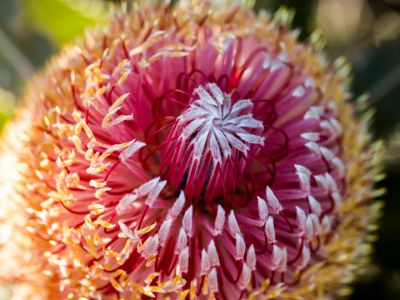
7. Gum trees got their name from their gummy tree sap
Gum trees are Australia’s most common native plant and earned their name because they ooze thick gummy-like sap if their trunk surface is damaged. Nearly all gum trees thrive in warm climates and are native to Australia.
Remarkably, gum tree flowers do not have petals. While often spectacular, the entire “bloom” of an Australian native gum tree consists of hundreds of stamens emerging from a central cone-like bud.
The flowers come in a range of colours, including white, bright red, vibrant orange, deep pink, and lime green.
Gum tree leaves range from blue to white, and they bear woody fruits called gumnuts.
Gum tree leaves are full of a substance called cineole.
As a result, only koalas, ring-tail possums, Greater Gliders and a few insects can eat eucalyptus leaves and bark. No other creature, including humans, can withstand the high levels of cineole. In fact, in high concentrations, it’s toxic. That’s why eucalyptus oil makes an effective and natural insect repellent.
The best didgeridoos are made from eucalyptus wood.
Gum trees can grow to great heights. In fact Australia boasts the tallest flowering plant in the world which is a type of gum tree – the Mountain Ash, (Eucalyptus regnans), also known as Swamp Gum. It’s reported to grow up to 114m tall.
Almost all eucalypts are evergreen, but some tropical species drop their leaves at the end of the dry season.
One of Australia’s rarest trees, the Mongarlowe Mallee, also known as the 'Ice Age Gum', is a type of eucalypt. Since its discovery in 1985, extensive searching has revealed the existence of just six trees across four sites in NSW.
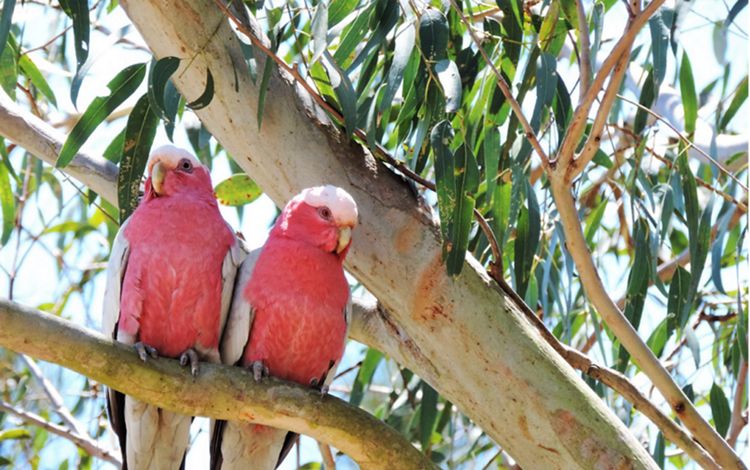
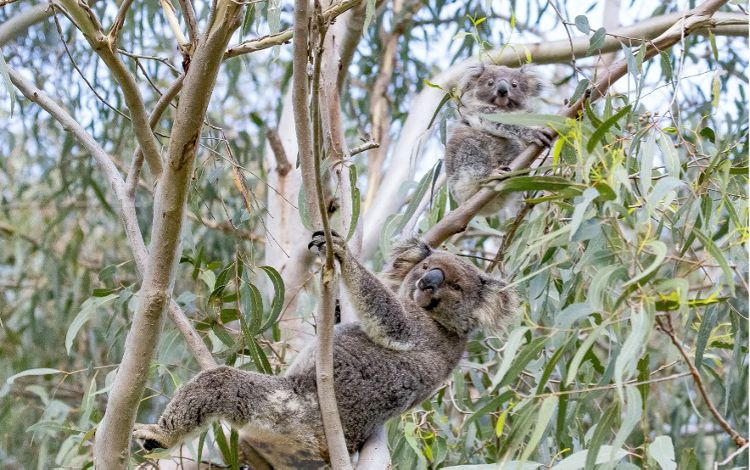
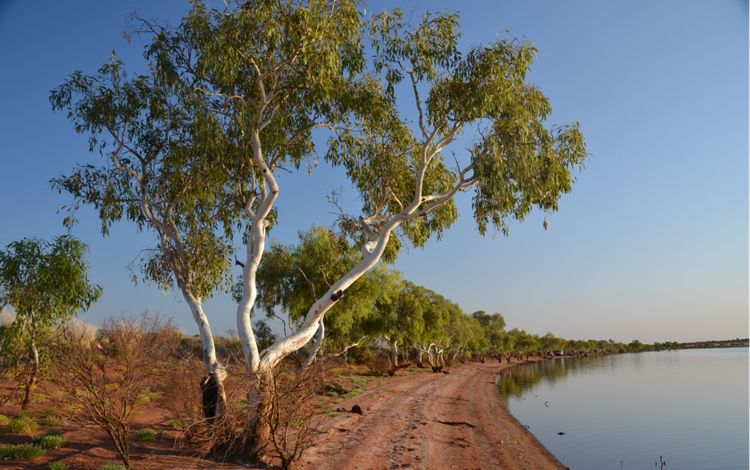
8. The Waratah was almost our national emblem
Waratahs are spectacular garden plants. In fact, they’re so spectacular they almost beat the Golden Wattle to be Australia’s national emblem back in the 1900s. This beautiful native plant is the NSW State floral emblem.
Waratahs produce bright red flowers in spring and attract a wide variety of birds.
The five species of Waratahs can also be found in yellow or pink, and in some rare cases, white.
Waratahs are an important source of food for nectar-feeding animals, like honeyeaters and pygmy possums.
They’re known to be resilient plants in their native home, surviving bushfires.
The Waratah flower is high in vitamins and carbohydrates. Aboriginal mothers would use the nectar of the Waratah as an alternative food source for babies not getting enough milk from mothers or when weening off the breast. The nectar was also used to relieve anxiety and stress.
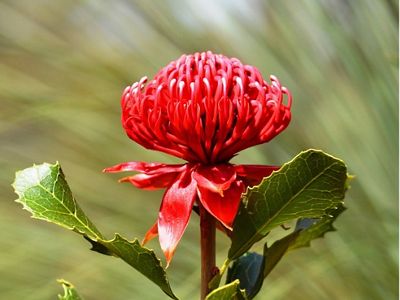
9. Hop bush was used for brewing beer
Dodonaea viscosa, is a resilient Australian native bush, also known as Sticky Hop Bush, or just Hop Bush. It can be found in every State and Territory of Australia.
The name ‘Hop Bush’ came from the plant having been used in colonial times in place of real hops for brewing beer. Bitter tasting capsules were harvested heavily in the 19th century for this purpose.
Some Aboriginal Australian groups have used Hop Bush as a painkiller and to treat inflammation from rashes and bruises. Jelly fish, stingray and stonefish stings can be were eased by binding wads of chewed leaf pulp on the affected areas. It’s also said to relieve diarrhoea, stomach and uterine cramps.
Australian native Hop Bush is tough and is often used to restore vegetation on degraded sites.
Dodonaea is particularly valued by beekeepers for the wonderful honey it produces.
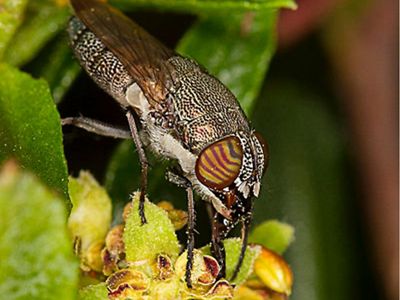
10. Grevilleas have an ancestry older than dinosaurs
Australian native grevilleas, also known as spider flowers, include more than 300 species.
Their colourful, unique flowers are made up of four long tubes known as a “lobes”.
Their colourful, distinctive flowers lack petals and instead consist of a long tube known as a “calyx”, which splits into four “lobes”.
Grevilleas have an ancestry older than dinosaurs. They originated on the super-continent Gondwana, and are closely related to banksias, waratahs, and the proteas of Southern Africa.
Grevillea flowers are known for their sweet nectar. Some indigenous Australian mix this nectar with water to make a delicious drink.
But you need to be careful. Not all grevillea flowers are safe to consume. Some flowers, like those of the silky oak (Grevillea Rrobusta) contain tridecyl resorcinol, which causes an allergic reaction leading to contact dermatitis. The chemical is like the toxicodendron in poison ivy.
Some types or cultivars of grevillea have poisonous nectar that contains cyanide.
The silky oak is the tallest grevillea, growing as high as 30 metres with spectacular golden flowers in spring. Grevilleas are also found as ground covers and bushes of all sizes.
Most grevilleas have proteoid or cluster roots, which are dense and fine. These roots greatly increase the absorbing surface area and allow plants to thrive in nutrient-deprived soils.
Birds, butterflies, and bees, along with other nectar eating animals adore grevilleas when they’re flowering.
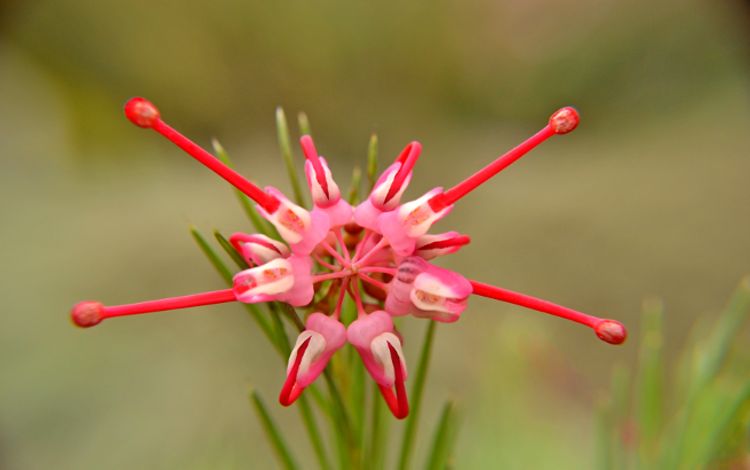
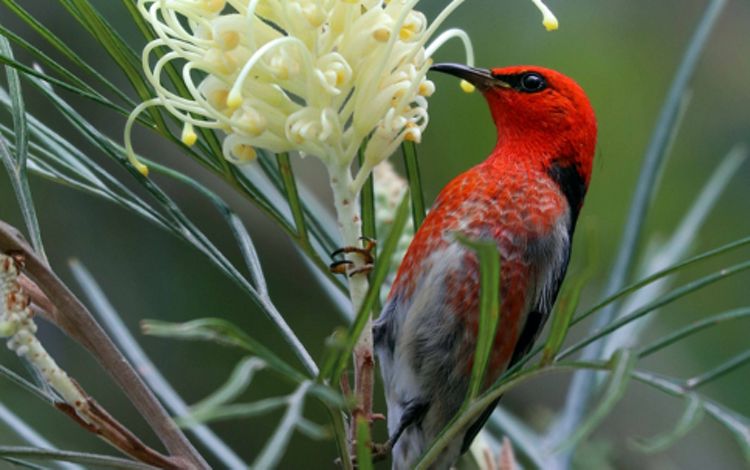

Want to know more?
Find out how we’re helping to conserve Australia’s iconic natural landscapes and wildlife
GET EMAIL UPDATES